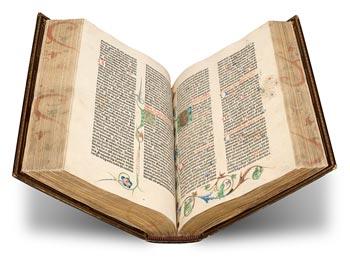
Lectio Divina – An Ancient Practice Revisited
Last week during a conference a small group of women met to pray for the meetings being held in tandem to our prayer meeting. At the beginning of the meeting I was asked to do “lectio divina” with the group. I explained the practice and proceeded to lead the group in a reading from II Corinthians 4:7-10, 16-18.
I followed a standard “lectio divina” order. The group was quiet; the scripture penetrating. At one point I could hardly continue reading because of the impact the passage was having on me the reader. We finished and sat in silence, then one of the women broke the silence by simply saying – “powerful”.
It was powerful and, as a practice, harkens back to a time when only the clergy had a written copy of the Holy Scriptures. The only way a common individual could interact with the scriptures was if they listened to the trained clergy reading the text often through the process of sacred reading or lectio divina.
Resurgent interest in the ancient art of sacred reading as a way to nurture our spiritual lives is compelling. “Lectio divina” – a Latin phrase for divine reading, spiritual reading or sacred reading – has been used for over 1,500 years.
Lectio divina comprises four elements: lectio (we read the text), meditatio (we meditate the text), oratio (we pray the text), and contemplatio (we live the text). But naming the four elements must be accompanied by a practiced awareness that their relationship is not sequential. Reading (lectio) is a linear act, but spiritual (divina) reading is not ‑any of the elements may be at the fore at any one time.
This classic formulation of “lectio divina”, preceded by 1.000 years of practices intended to shape reading into living, was by a European monk Guigo the Second in the 12th century.
Only since the invention of the printing press has it been possible to own a copy of the scriptures to read. Before that people listened to them being read.
Eugene Peterson in Eat This Book: A Conversation on the Art of Spiritual Reading – “Print technology ‑ a wonderful thing, in itself ‑ has put millions and millions of Bibles in our hands, but unless these Bibles are embedded in the context of a personally speaking God and a prayerfully listening community, we who handle these Bibles are at special risk. If we reduce the Bible to a tool to be used, the tool builds up calluses on our hearts.”
He continues about lectio divina – “The primary organ for receiving God’s revelation is not the eye that sees but the ear that hears ‑ which means that all of our reading of Scripture must develop into a hearing of the word of God.”
We know from Scripture itself that immersing ourselves in God’s written word is transformative. It is profitable to us for teaching, for reproof, correction, for training in godly living (II Timothy 2:16-17). It is alive and powerful in penetrating our thoughts and motives (Hebrews 4:12). As followers of Christ we have the indwelling Holy Spirit to guide us when studying the scriptures – the Spirit of Truth (John 14:16-17).
We have excellent methods of bible study. We have excellent tools for gleaning truth from God’s written revelation. But, without penetration and application deep into our hearts and souls all our knowledge of scripture makes little difference in how we live and act and relate. Cognition only does not transform.
Lectio divina offers a way to ingest God’s word to the core of where we need it. It can be done individually or corporately. Consider trying this yourself or choose a reader to read it as a group. Select a passage of scripture (6-8 verses) and read through it 4 times and after each reading ask yourself these questions.
Read (Lectio): What word or phrase stands out to you?
Reflect (Meditatio): How is my life touched by this word?
Respond (Oratio): What is God calling me to do or be?
Rest (Contemplatio): Rest in the Word of God and in the Presence of God
We need both analytical study and contemplative reading. Neither process is done to the exclusion of the other. God desires to penetrate our mind and our hearts with the scriptures so that we can make a difference!
For further interest in this reading process:
Peace, Richard. Contemplative Bible Reading: Experiencing God through Scripture.A Spiritual Formation Study Guide. Colorado Springs: NavPress, 1998.
Peterson, Eugene. Eat This Book: A Conversation on the Art of Spiritual Reading. Grand Rapids, MI: William B. Eerdmans Publishing, 2006.
http://www.leadershiptransformations.org/documents/2013.10.Silencio.LectioDivina.pdf
The Gutenberg Bible was the first printed Bible and was printed in Latin in 1456 a 3-5 year project.
http://www.themorgan.org/collection/Gutenberg-Bible




